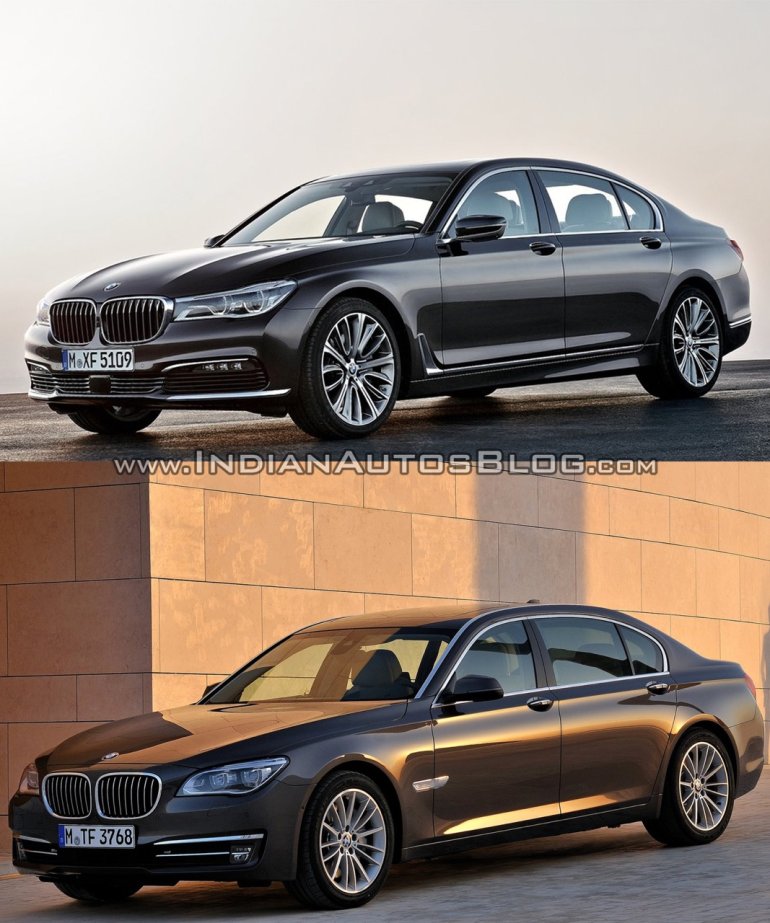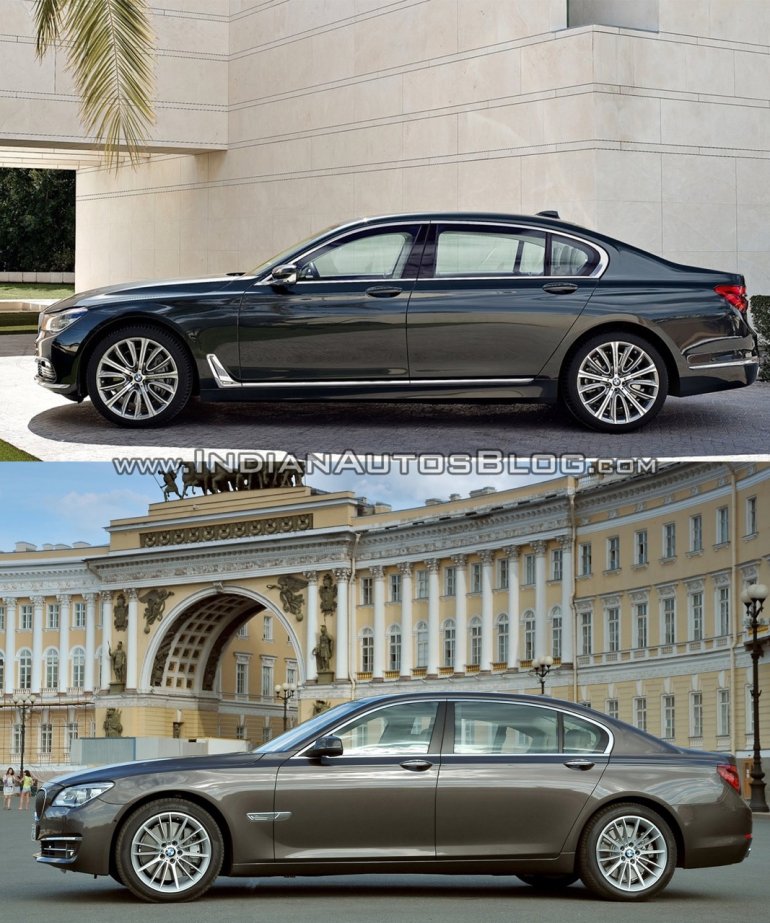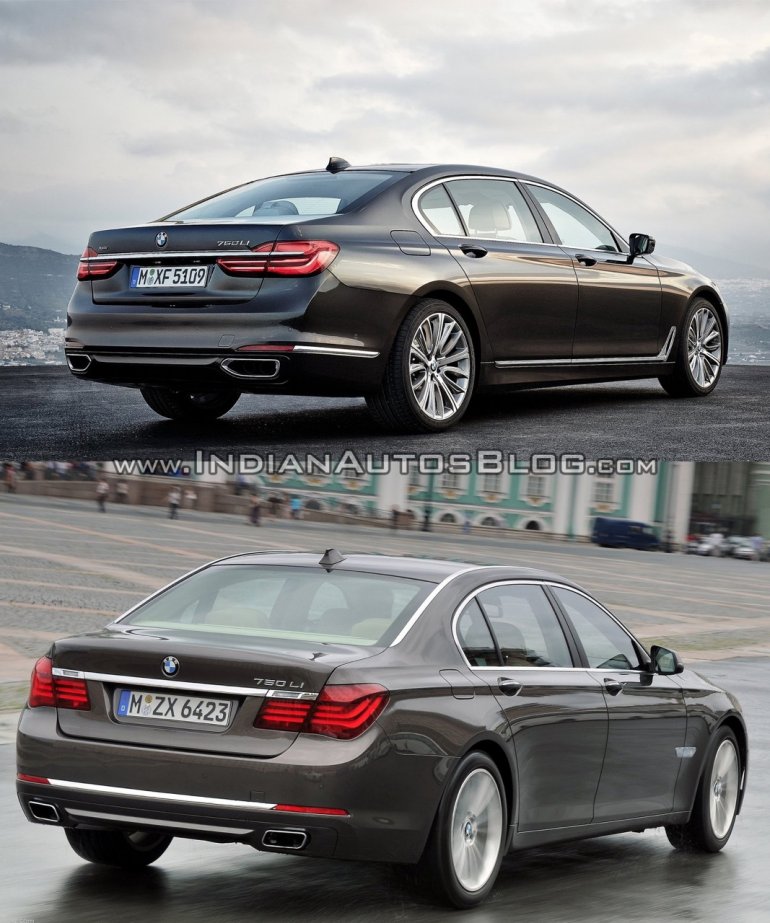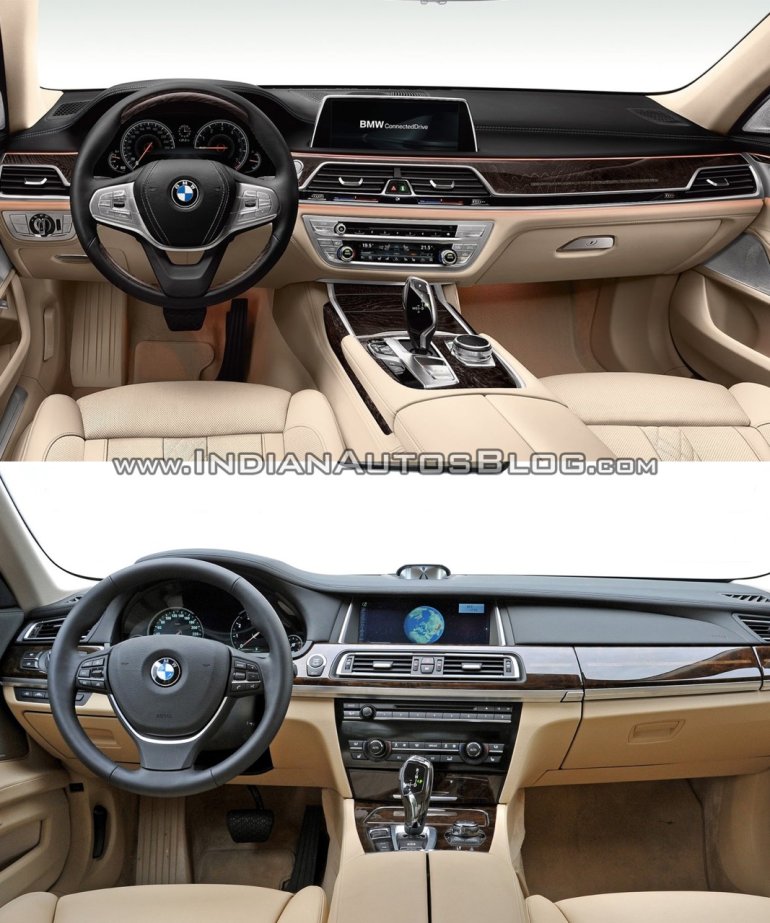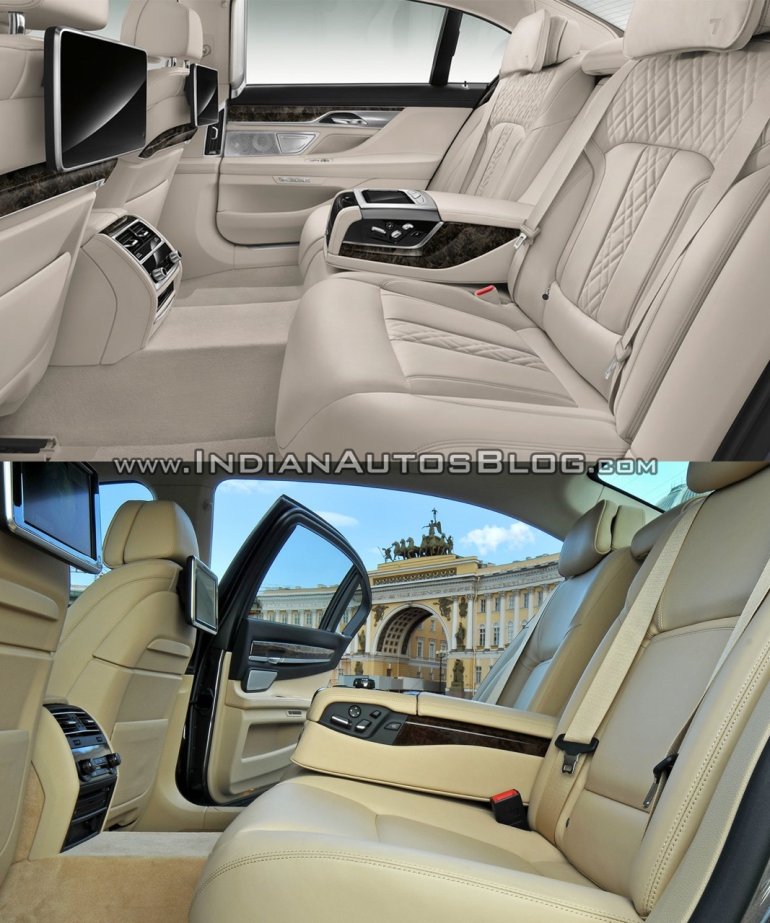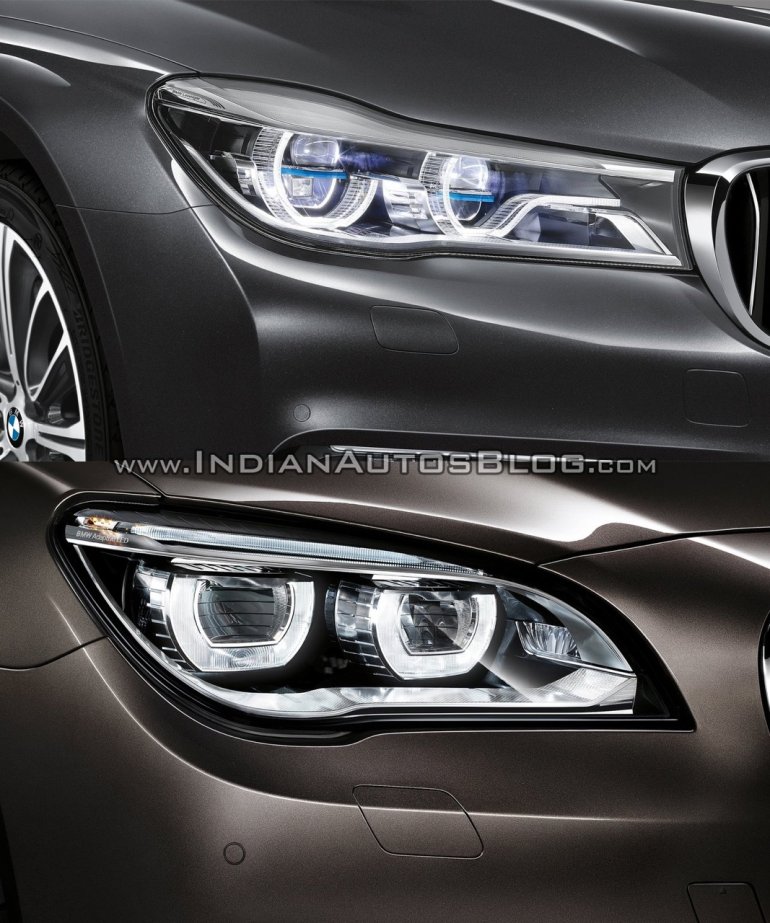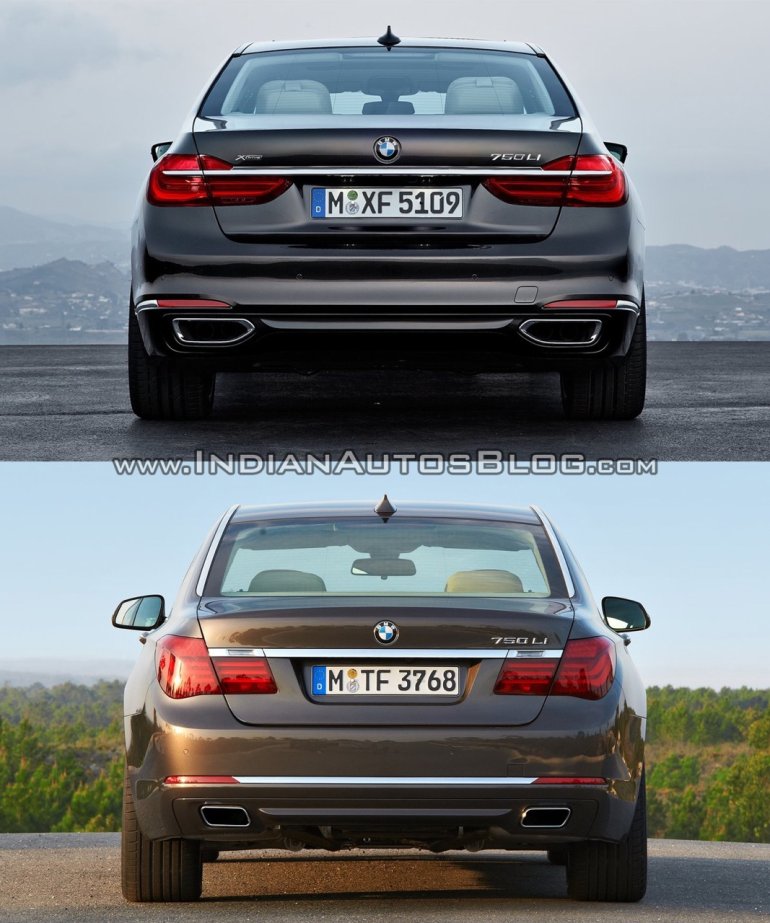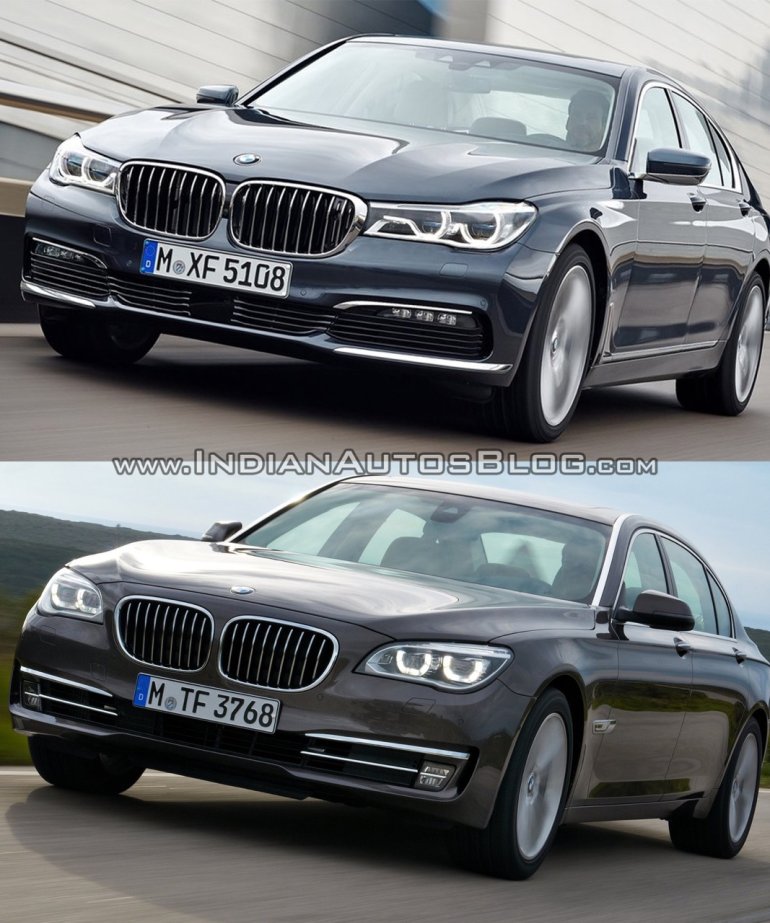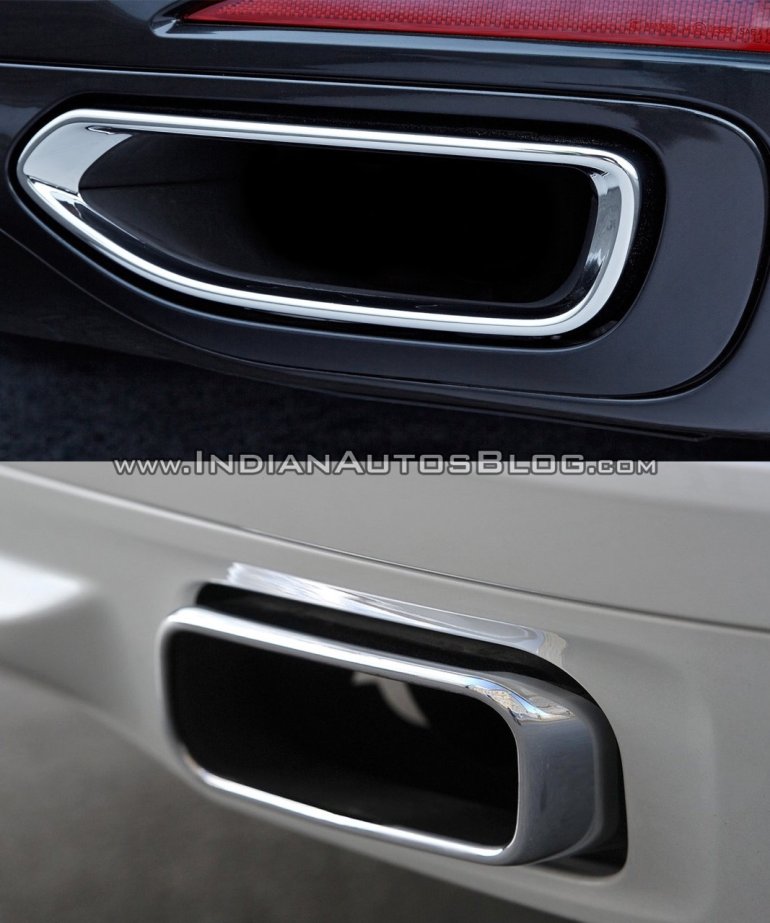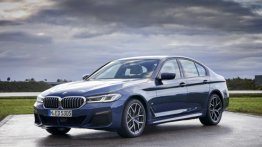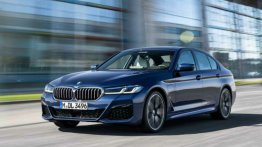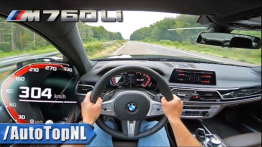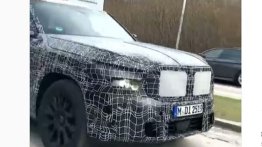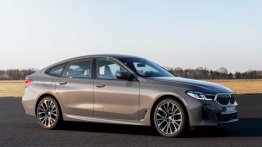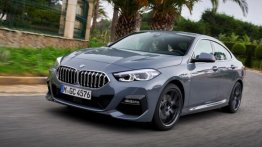Biggest change is the new CLAR platform with carbon fiber integration.
BMW has finally unveiled what can be regarded as one of the most highly advanced products in the company's illustrious long history, which is all set for a rematch with the Mercedes S-Class. The 2016 BMW 7 Series (G11/G12 LWB) takes an evolutionary step over the outgoing model, with respect to design, equipment, engines and platform, and brings many "world's firsts" to the table, which is fitting for a BMW flagship.
Below is a pictorial comparison between the two generations, covering all key aspects and changes.
Exterior
Compared to the outgoing model, the new BMW 7-Series doesn't represent a big leap as expected. Yet, the new design elements that draw inspiration from the BMW Vision Future Luxury Concept combine to lend a fresh look to the 7 Series line.
The front end is characterized by larger headlamps that flow into the iconic kidney grilles, bigger air intakes in the lower fascia with extra slashing of chrome, and a sculpted hood that adds a sense of muscularity to the front end. Other than the standard Adaptive LED headlamps, BMW is also offering optional Laserlight headlamps that provide a high-beam range of 600 metres, which is double the range of the LED unit.
The side profile of the two cars appear to look similar, save for the chrome-embellished side intake that flows across the profile, new rear view mirror design and an updated collection of alloy rim designs with 17- to 21-inch sizes
Coming to the back, the new 7 Series gets a sleeker pair of L-shaped LED taillamps, a long chrome accent running into both taillamps, and a well sculpted rear bumper that has integrated exhaust tailpipes.
The 2016 BMW 7 Series measures 5,098 mm in length (long-wheelbase version: 5,238 mm), 1,902 mm in width and 1,478 (1,485) in height. Compared to the long-wheelbase-version offered in India, it is 19 mm longer and 4 mm higher, thus making the latest 7 Series the largest series-produced BMW ever made.
Interior
Like the exterior, the interior of the 2016 BMW 7 Series will look familiar to a BMW enthusiast. However, designers have made necessary changes and upgrades to further improve the luxury quotient of the car to S Class-rivaling levels, if not better.
The dashboard design is similar to the outgoing model, although BMW has updated the design for a cleaner look. It gets larger HVAC vents that are outlined in silver trim across the wood-trimmed dashboard. The button count on the center console has been reduced, leaving space for sleek color screens that display HVAC settings and seat temperatures. The center tunnel is embellished with aluminum and silver trim, which houses the updated gear selector and the familiar iDrive controller.
The 3-spoke multifunction steering wheel borrows design cues from BMW Vision Future Luxury Concept, while the new instrument display is a step up from the outgoing model in-terms of 3D graphics and layout.
The new 7 Series offers optional ambient lighting with a "Welcome Light Carpet", which illuminates the area around the car doors when unlocked. Long-wheelbase versions of the new model features an optional Sky Lounge Panorama glass roof, where a set of LED modules illuminate an imprinted graphic.
Customers opting for the Executive Lounge get a quad-zone HVAC system, electrically adjustable individual seats with massage function and ventilation for all seats, a fold-out table, additional cupholders and the Touch Command system with a removable 7-inch tablet that allows the user to control the infotainment.
Equipment and Features
One of the key new features of the BMW 7 Series is the latest iDrive 5.0 infotainment system, which supports touch and air gestures for the first time. The iDrive software runs on a freestanding Control Display atop the center console, which can also be navigated via the familiar iDrive controller on the central tunnel. Other than supporting touch gestures, the hand gestures are detected by 3D sensors and can be used to adjust the volume or accept/reject incoming telephone calls as well as to call preset contacts defined by the user.
The BMW 7-Series has the distinction of being the world’s first mass-produced car that can autonomously park in or out of spaces/garages without anyone at the wheel, which can be triggered using the optional display key. It also features an advanced Active Cruise Control with Stop & Go function and Lane Departure Warning Assistant that takes a step closer to autonomous mobility.
Also offered is the Head-Up display which, in the new 7 Series, is the largest unit integrated. The Surround View system from the outgoing model has been upgraded to include a "3D View" and
"Panorama Side View" option in the Control Display.
Powertrain and Chassis
The sixth generation BMW 7 Series is the first model to ride on the company's latest CLAR modular platform. One of the key highlights of the new platform is the integration of CFRP (carbon fiber reinforced plastic) in combination with steel, aluminum and plastic, which BMW terms as ‘Carbon Core’.
With the new platform and innovative body construction, the 2016 BMW 7-Series is 130 kgs lighter than the outgoing model, helping improve fuel efficiency and handling.
Power for the 2016 BMW 7 Series is sourced from a revised engine lineup tuned for greater fuel efficiency and more power. The only diesel option available for now is the BMW 730d, which is powered by a B57 six-cylinder diesel motor delivering 265 PS (7 PS more than the outgoing model). Fuel efficiency is rated at 22.2 km/L (EU cycle), representing a significant improvement over the previous car’s 17.8 km/L. Despite the weight loss, both generations of the 730Ld variant sprint from 0-100 km/h in 6.2 seconds.
The petrol models constitute an i6-powered 740i and a V8-powered 750i xDrive. The former packs a 326 hp 3.5-liter straight six-cylinder (B58) from the facelifted BMW 340i, while the latter sports a 444-hp 4.4-liter V8 TwinTurbo.
The only transmission option available is an 8-speed automatic, also linked to the car's navigation system. The 750Li sprints from 0-100 km/h in 4.7 seconds (0.1 second faster than the outgoing 750Li) and tops out at a limited 250 km/h, while the 740i manages the 0-100 km/h sprint in 5.5 seconds.
An air suspension system is offered as standard with automatic self-leveling that enhances the ride comfort and handling, depending on the mode chosen via the Driving Experience Control switch.
